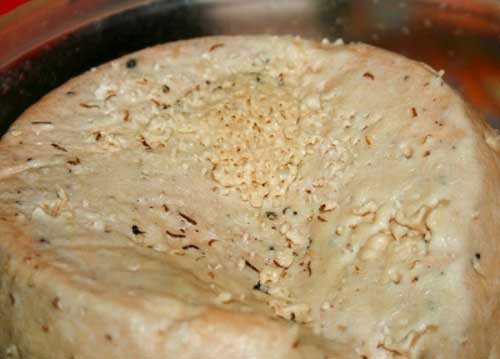




Many countries have their own national dishes, which can simply shock tourists, some of these dishes can even be hazardous to health. Be careful and do not risk your health.
Bull Frog In Namibia, both adults and children want to see this huge amphibian on their table. She there is something like our turkey. The inhabitants of Namibia eat the whole animal, although in the rest of the world they eat only paws, since the skin and internal organs of this huge animal contain dangerous poison, which can easily destroy the adult's liver.

Puffer fish This dish is fairly well known and only one who is completely far from the Internet or television does not know about it. However, we do not consider it superfluous to recall once again that this fish may be the last thing you try in your life. The poison contained in caviar and puffer liver can cause body paralysis and death. In order for the poison not to fall into the delicious pulp, the cook must carefully clean the poisonous entrails of the fish. In Japan, about 10 deaths from poisoning by this dangerous fish are recorded. But, oddly enough, those wishing to try the delicacy are not getting smaller.

San Nak Ji This is a lively moving octopus dish that needs to be eaten whole. Sometimes it is treated with seasonings and sauces, sometimes not - it all depends on the personal taste preferences of the client. Oddly enough, every year a couple of triples of lovers of tasty food leave this delicacy in a different world - an octopus moving its legs clogs its airways and a person dies.

Cassava This root in many countries is used to prepare a huge number of dishes: flour is made from it, it is used as a seasoning. At the same time, if you do not know how to cook it correctly, then it’s better to choose a simpler meal: cassava contains the most dangerous poison - cyanide, which even causes death in microscopic doses.

Fruit aki This plant is actively used for cooking in Jamaica. It is a bit like an avocado or pear in shape, only has a bright red hue and contains a very strong poison that can easily kill a person in a matter of hours. The secret of cooking is to collect the fruit at the moment when its fruits open: if it is overripe or does not ripen, all its parts will contain poison. In a mature fruit, aki venom is found only in the peel, and the flesh around the seeds can be eaten.

Giant poisonous jellyfish The recipe for making jellyfish is quite simple: just take and cut off all the poisonous, if you cut it off correctly, then you will not die, if it is wrong, then there’s nothing to be done.

Casu Marzu Wood cheese that infects the larvae of a cheese fly, after which the larvae multiply, accelerating the process of fermentation and decomposition. After several weeks, the cheese turns into a curd mass eaten by worms. Some people prefer to eat insect-free cheese; some believe that it is more aromatic and tasty with worms. However, Casu Marzu is fraught with a certain danger: firstly, worms bounce and can hit your eye, and secondly, very often they do not digest, causing diarrhea and vomiting. It is impossible to get rid of them without surgical intervention.

Elderberry Elderberry is a very common berry that is used to give a special flavor to jam and other dishes. Spirits such as brandy and sambuca are made from berries. But few people know that elderberry can be deadly, because unripe berries contain potassium cyanide, which is very dangerous.

Spider a-ping Fried spider is considered a delicacy in Cambodia, where several tourists die every year from poisoning by this insect. The a-ping spider, although quite pleasant in taste, can nevertheless cause serious damage to health due to the poison contained in its glands. Therefore, it must be prepared by real skilled professionals who know their job well.

Balut is a hard-boiled duck egg inside which the formed embryo is located. It turns out Balut for Cambodians and Filipinos serves as a light snack or a full breakfast. Such a delicacy carries Salmonella bacteria, which cause food poisoning in humans, and are also potential sources of infections.

Kiwiak This dish is made from a young seal stuffed with gulls. Greenland is considered the birthplace of Kiviak. For the local population, this dish is a very expensive and very tasty delicacy. Residents of the north prepare it very rarely, only on special holidays. Such meat is dangerous bacteria of Listeria from which hundreds of people die per year.

Rat dish In recent years, rat dishes have appeared in almost all local restaurants in Vietnam. This exotic dish has become so popular that every day farmers from the eastern provinces catch hundreds of kilograms of rats on rice plantations and deliver them to local bars and restaurants. Rats are carriers of various diseases.





